The glass apron is a 99% ideal choice and a great alternative to tile, porcelain stoneware, stone and other types of wall panels for the kitchen. If you are thinking about buying just this kind of apron, then most likely you have already heard that there are many varieties of kitchen glass aprons on the market: skinali, triplex, plexiglass, optivet, satinate, enamel ... Let's find out what these words mean and what else you need to know before going to the store.
General characteristics - pros and cons
Pros:
- Glass panels look much more harmonious in the interior of kitchens in a modern style (Scandinavianneoclassical Art Deco, modern, minimalismloft high tech), as it is ideally combined with the glossy and glass facades of the headset, as well as with the chrome and glass elements of household appliances;
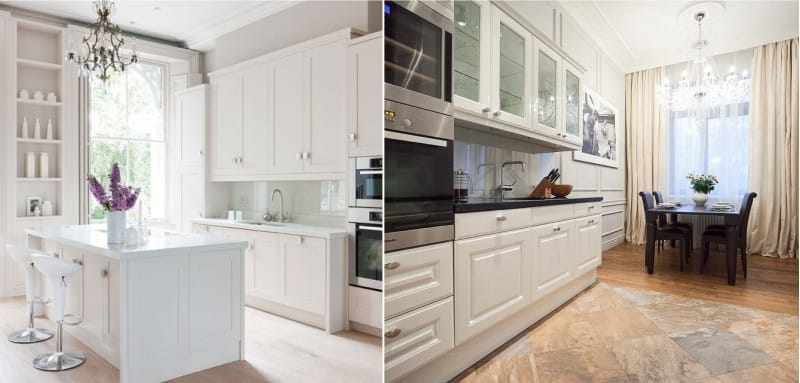
- Installation of any kind of glass is made very quickly and without dirt in about 1-2 hours;
- Glass panels are seamless or have a minimum of seams, making it easier to keep them clean than, for example, an apron made of ceramic tiles, since dirt does not accumulate in the joints;
- The gloss of the glass itself is beautiful, in addition, it reflects the light and visually enlarges the small space. Small kitchens with a glass apron are presented in the next selection of photos.
- With glass, you can realize original, personalized decorative ideas: decorate it with photo printing, stereo printing, sandblasting, vinyl color monochromatic backing or order a backing with a picture (from the workshop catalog or with your own). And you can choose a matte or textured glass surface. The photo below shows skinal with graphic images (scroll to the right).
If you wish, you can not only come up with a design yourself, but also make a decoration yourself, for example, insert a family collage of photos or favorite recipes under the glass.
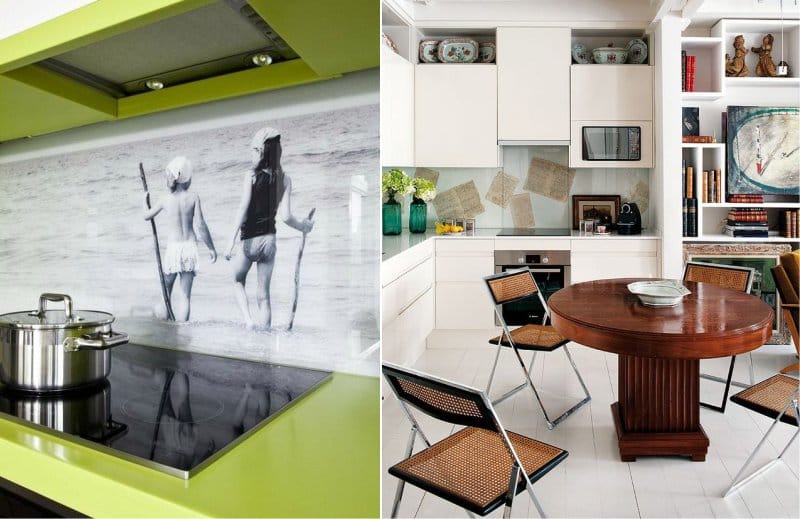
- Only transparent glass will be able to protect the noble materials and textures such as stone or wood, without hiding their beauty.
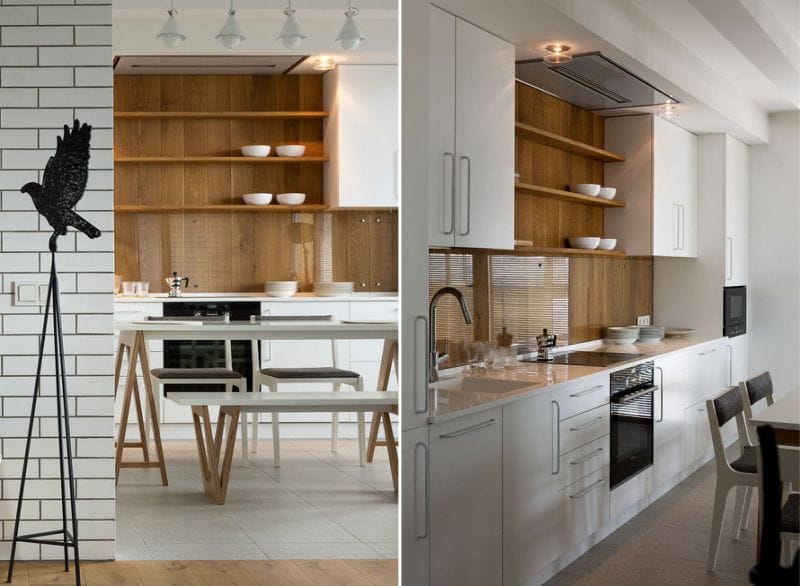
Often glass cover wallpaper or painted walls, so as not to overload the interior of the kitchen dissimilar surfaces.
- Glass kitchen apron like no other combined with any lighting.
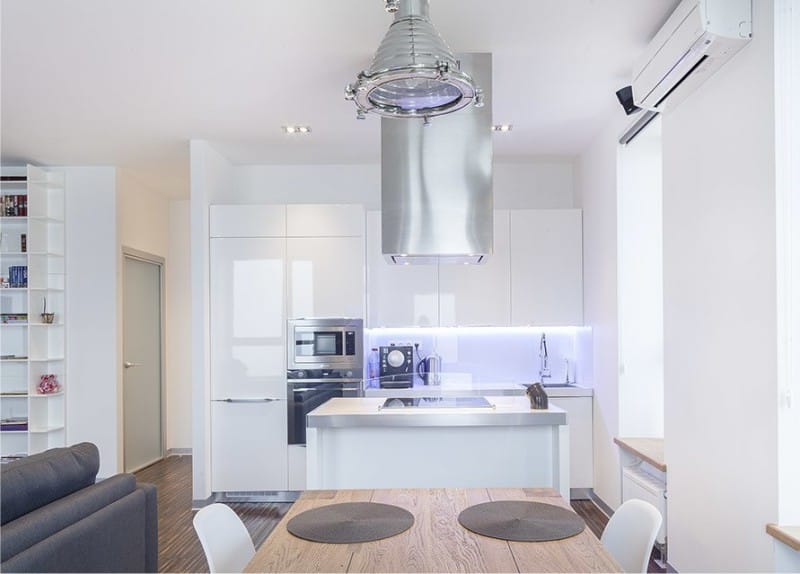
Minuses:
- The glass panel for the kitchen is relatively expensive (except for quite budget Plexiglas). The average price of a standard apron: 4700 rubles. for 1 square. m. with installation.
- Installation of glass aprons is made only after complete assembly of the headset, or at least when you are fully confident in the size of the future kitchen, and sockets, switches, communications, etc. are already installed. Making an apron is a matter of responsibility without the right to make mistakes, alterations and improvements during the installation process and after it.
- If you can buy a tile and deliver it to the house on the same day, it will be skipped (glass with photo printing) for about 7-14 days.
- Incorrectly chosen design skinali can spoil the whole interior of the kitchen, overloading the space with its variegated or unsuccessful color, and also quickly get bored.
- Although the design of the glass apron and may be different, after all, it is not suitable for every kitchen. For example, in interiors in style classic, provence, country music, chebbi chic glass panels (even with a discreet image) will look less organic than traditional tiles.
But how does glass withstand temperature extremes, humidity, frequent washing, strikes and other kitchen difficulties? These characteristics may vary depending on the type of glass, which we will look at in order below.
1. Tempered glass apron (Stalinite)
Tempered glass (stalinite) - This is a common silicate glass, which is subjected to high-temperature heat treatment, and then rapidly cooled.
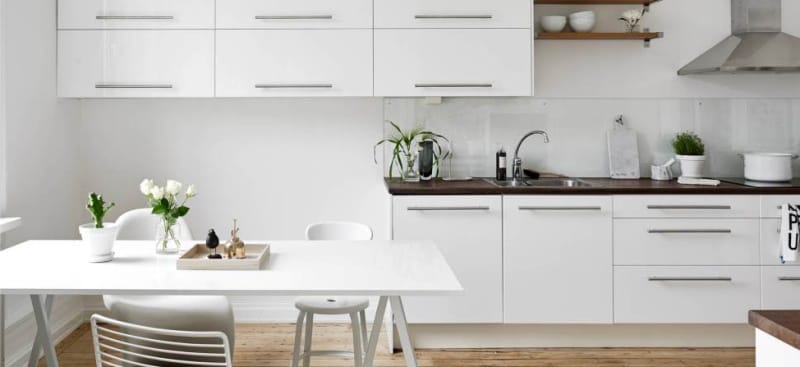
Pros: In addition to all the above advantages, an apron for a kitchen made of glass of the type Stalinite has a significant advantage - its strength to impacts is 5-10 times higher than that of ordinary glass, and if such an apron is broken, it will break into small pieces with blunt faces that can not be cut. Unlike acrylic or raw glass, tempered glass can be easily installed near a gas stove - it does not deform or burst due to temperature changes and overheating. It practically does not scratch, does not tarnish, is not afraid of moisture, it can be washed even with a brush with abrasives. Like tile, stalinite can last about 10 years or more.
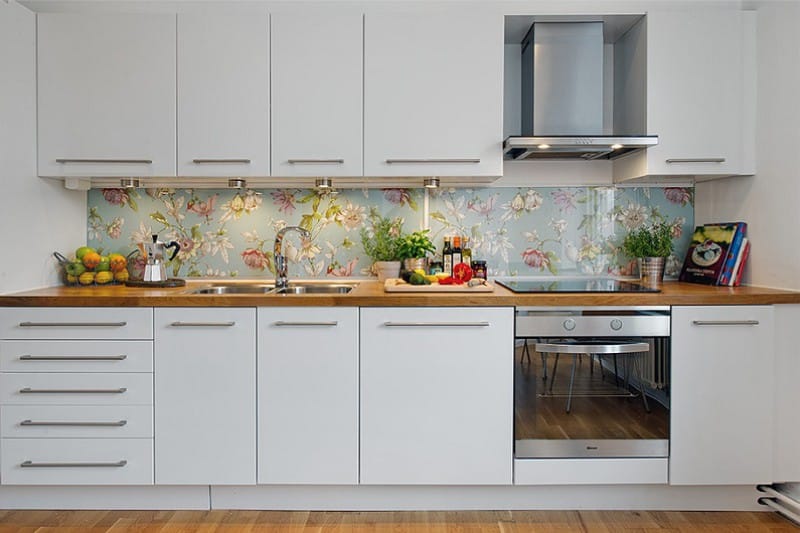
Minuses: more expensive than ordinary glass and plexiglass (but not more expensive than high-quality ceramic tiles, porcelain or stone), does not allow to change the size of the panel and the holes in it during installation (all the cutouts can only be made by the manufacturer before the tempering step), is made about a week.
Varieties and variations of design:
- Stemalit (enamel, enameled, back-colored glass) is glass that was first painted with colored enamel and then toughened, due to which paint and glass became inseparable from each other;
- Satin - frosted glass. It is a little more expensive than clear, unbleached tempered glass, it looks beautiful, but is more difficult to clean;
- Skinali - glass panels with a decorative substrate, that is, with the image - film vinyl, with photo printing or stereo printing. Photo printing increases the cost of the product by 30-50%, and stereo printing is twice as expensive.
- Optite (Optiwhite) is a bleached tempered glass that does not have the characteristic “bottle-colored” greenish-blue tint, and therefore more suitable for aprons with a light decorative substrate, even if color clarity and detail of the pattern are important to you. However, an opt-in apron for the kitchen is more expensive than an unbleached one and a half to two times. In the photo below you can see the difference between Optiveite glass and unbleached glass.
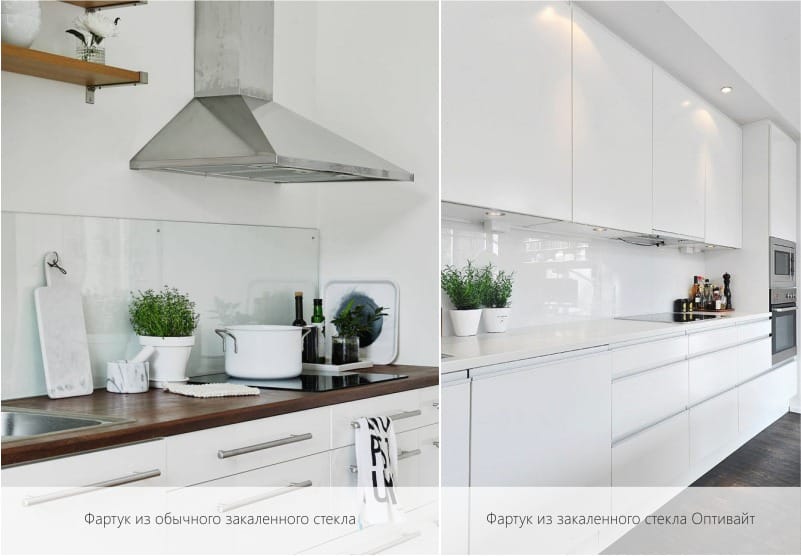
- Fiberglass panels with built-in LED backlight - the backlight is embedded in profiles that are mounted on the top and / or bottom of the apron. Thus, it turns into an independent lamp.
On the other hand, you can install the backlight in another way, for example, by simply sticking LED strip or setting wardrobe spots as shown in the photo below.
Tips for choosing a tempered glass apron
- The cheapest form of stalinite has a thickness of 4 mm, but it will also have less resistance to impact and bending. Much more reliable will be a glass panel with a thickness of 6 mm or more;
- Keep in mind that, as a rule, an apron made of tempered glass is ordered on a turnkey basis, that is, starting with measurements and ending with installation, therefore the final price of an apron depends largely on the installation nuances - mounting method, number of parts of the apron, if composite, the number of cutouts for sockets and rails, etc.
- If you want to order skinali, then you can choose the image yourself on this site. Most often, designers in workshops take pictures for photo printing from this photo bank.
- As for the choice of design for skinali, it is important to proceed not from the beauty of the picture itself, but from how much it can fit into the interior of the kitchen according to the plot and color. It is better when the drawing consists of a maximum of 3 colors that are present in the design of your kitchen, otherwise it will be too intrusive, active, will create a sense of confusion. If in doubt, choose a win-win universal options - white or neutral glass color, and if you want brightness, then the color panels without pictures.
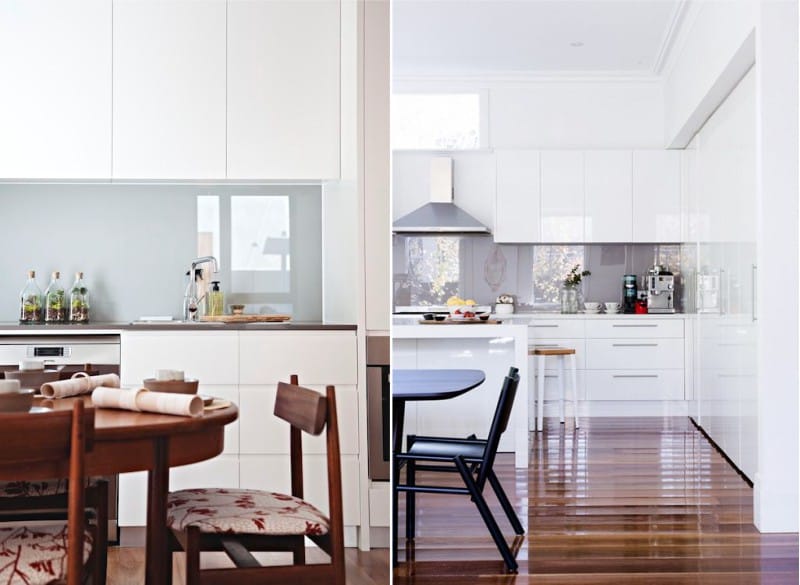
If the walls in the kitchen have a beautiful finish, for example, wallpaper with a pattern, brickwork or textured concrete, then it is best to choose transparent glass Optivayt, and not thrown.
2. Apron from triplex (laminated glass)

Triplex is a laminated organic, silicate or tempered glass, that is, when two or more layers are glued to each other with a special polymer film, which, in case of glass damage, does not allow fragments to crumble, keeping them on themselves. The thickness of the apron from triplex is often 8 mm. If transparent triplex is used on the windshields of cars, then the polymer layer for aprons often has not only a protective, but also a decorative function.
Pros: absolute safety, durability, heat resistance, design variability, ease of care, etc.
Minuses: Triplex is used to make an apron less often than tempered glass, as it costs somewhat more expensive (triplex of tempered glass is the most expensive material), it is heavier, has less transparency than tempered glass. Another disadvantage is the long production time of the decorative triplex (14-30 days).
Varieties and variations of design: triplex with photo printing, triplex with a decorated layer of glass, (matte, painted), triplex with a mirror or foil, triplex with a layer of tempered glass, also an apron from triplex can imitate leather or fabric.
In the following video you can see different combinations and variations of triplex decor:
3. Apron made of plexiglass
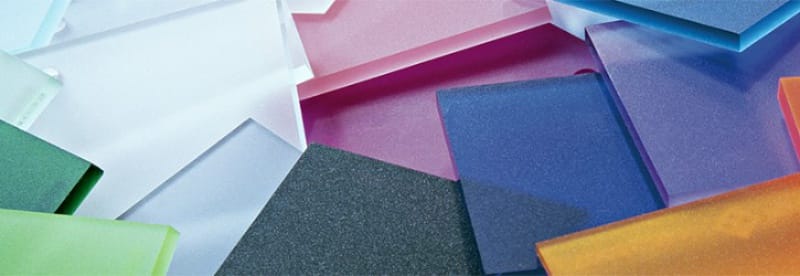
Plexiglas is often called acrylic and PMMA glass, and it is also available under the names Plexiglass, Acrylite, Caroglass, Limacryl, etc.
Pros: Plexiglas is impossible to break, it is very cheap, easy, flexible, undemanding on the quality of the wall. You can install it yourself and cut it yourself, if necessary, add holes for sockets, etc. The advantages include fast production time, design variability, moisture resistance, impact resistance and environmental friendliness - even when burning, plexiglas does not emit harmful substances.
Minuses: scratches, tarnishes, it is impossible to wash the apron with abrasives and hard sponges, is afraid of acetone and alcohol, from overheating (at temperatures above 80 ° C) can be deformed, therefore it is undesirable to install Plexiglas behind a gas stove. He also loses ordinary and tempered glass in appearance and transparency.
Varieties and variations of design: Plexiglas can be colored (painted in mass), as well as decorated with photo printing.
4. Polycarbonate apron

Polycarbonate is very similar to plexiglass, but it has more suitable qualities for the role of a kitchen apron.
Pros: glass panel for the kitchen of polycarbonate will be much cheaper than panels of stalinite, triplex, tiles, etc. popular materials. More resistant to elevated temperatures than plexiglass, and stronger than tempered glass. In addition, it is lightweight, flexible, you can install it yourself.
Minuses: the main drawback is quickly scratched, loses to ordinary glass in appearance.
Installation and mounting
When ordering a glass apron for the kitchen, you will also need to choose one of three mounting methods:
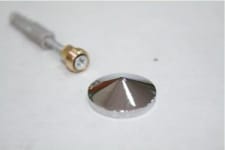
- With the help of screws, which are then put on decorative caps. This method is reliable and good because the apron can be installed on any surface - imperfectly even or even on the old tile, and if you want to remove the apron and install it again. Between the wall and the panel will remain a distance of approximately 4 mm. Minus: the plugs will be visible, although they do not spoil the view.
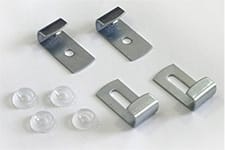
- With the help of mounted fasteners. In this case, the panel is inserted into the inconspicuous metal plate clips as in the photo on the right. This method of installation is more suitable for installing unprofitable aprons, as it allows exactly to join its parts.
- Using liquid nails or glue. To put the glass panel on glue or liquid nails can only be on smooth, plastered walls, but the glass planted on glue will not have visible fixings.
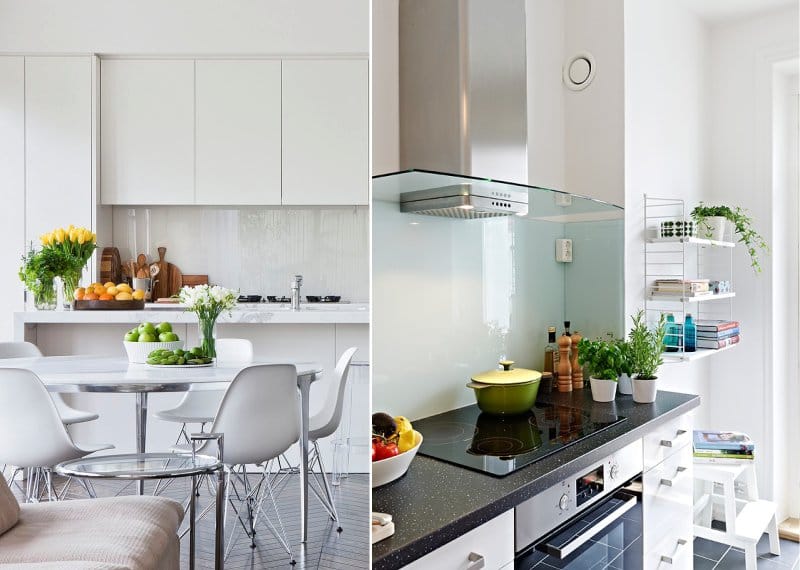
After installing the apron made of glass, the gap between it and the table top is closed with a corner. If the apron consists of several parts, the seams are processed with a thin layer of sealant that will not be noticeable.
Can I install the glass apron on my own? If this glass is made of acrylic or polycarbonate, then the installation will be simple, but triplex and stalinite require the skills of working with glass. More information about installing a glass apron can be viewed in this video:
- All about kitchen mosaic apron and more
- How to choose an apron for the kitchen - Help for the buyer
- Plastic apron - information for customers
- The correct size of the apron is the secret of a comfortable kitchen.
- Apron from the tile "hog" in the interior of the kitchen - from the choice of design to laying your own hands
- MDF wall panels in the apron and kitchen walls

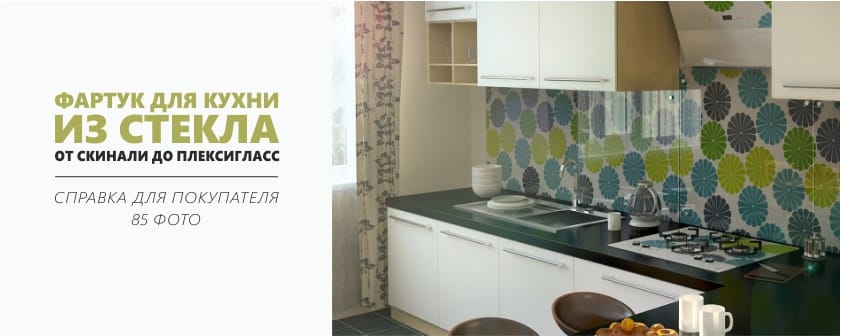
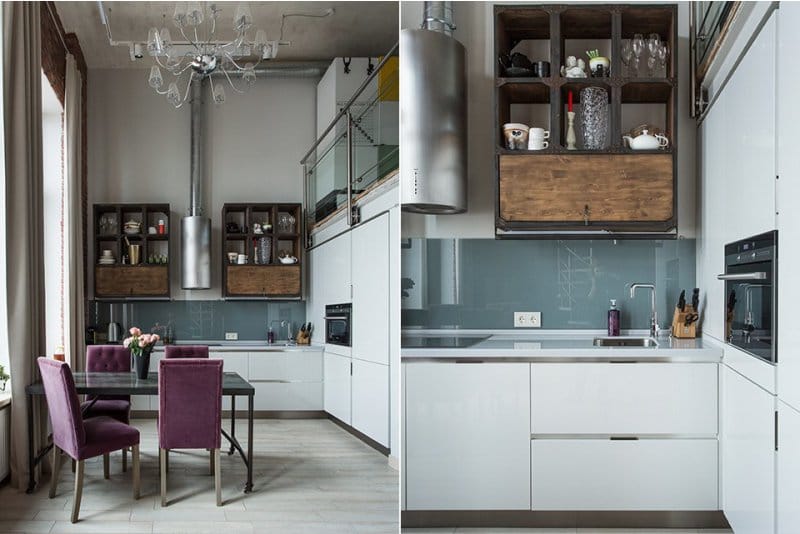
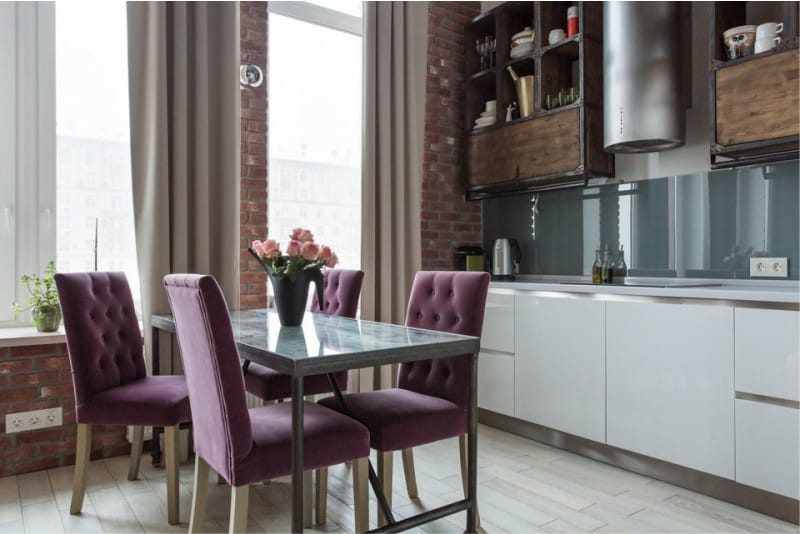
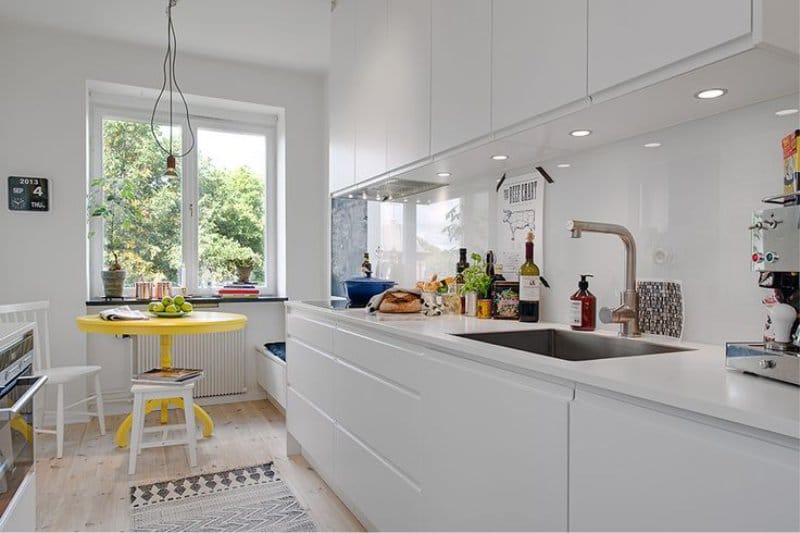

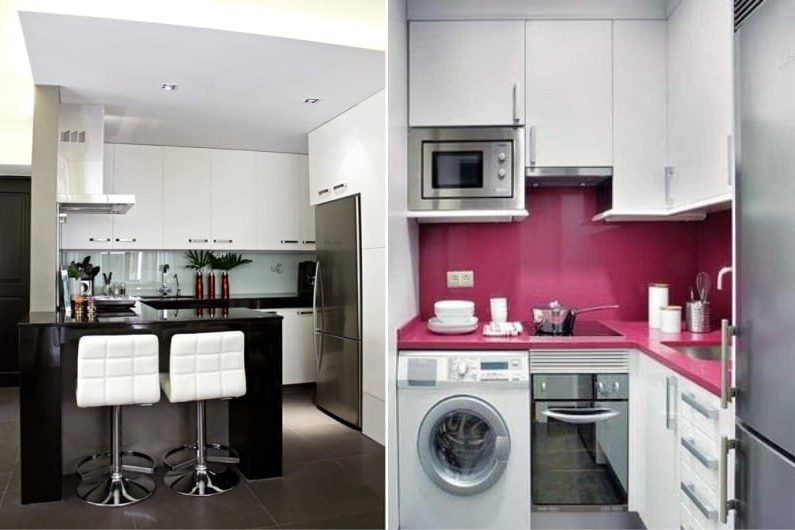
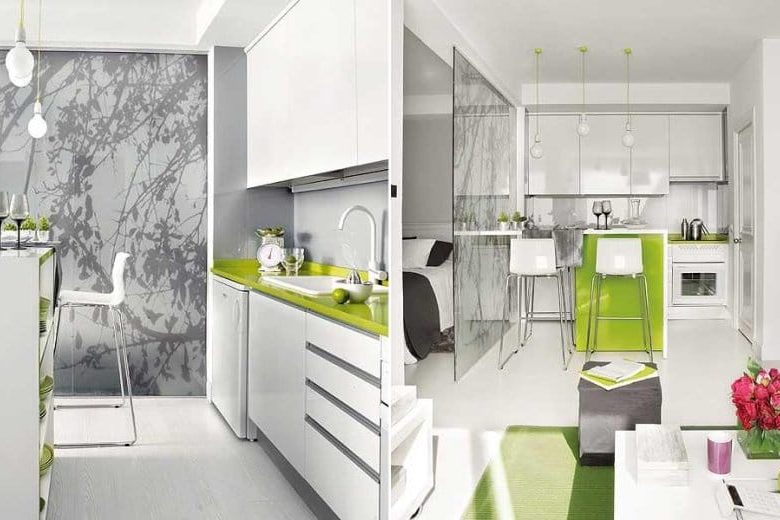
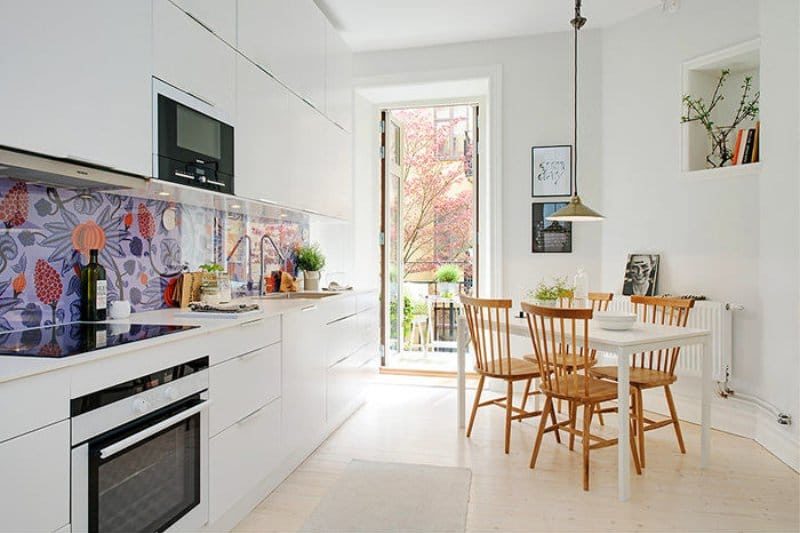
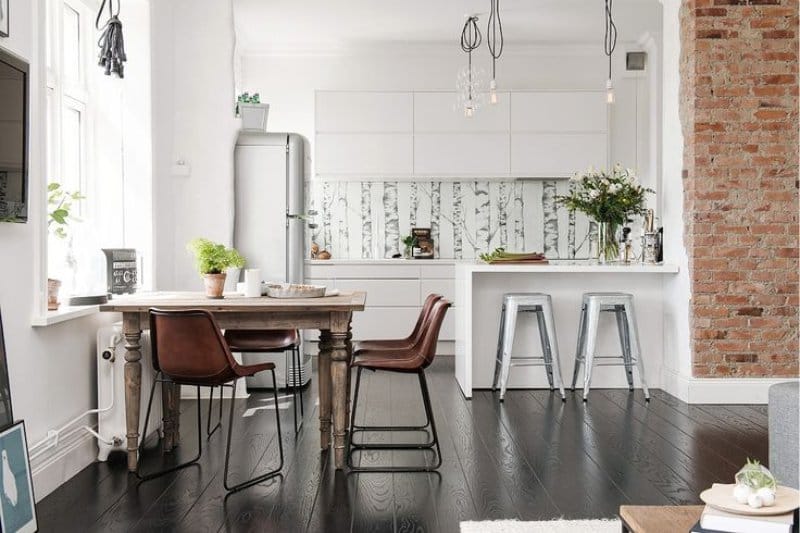
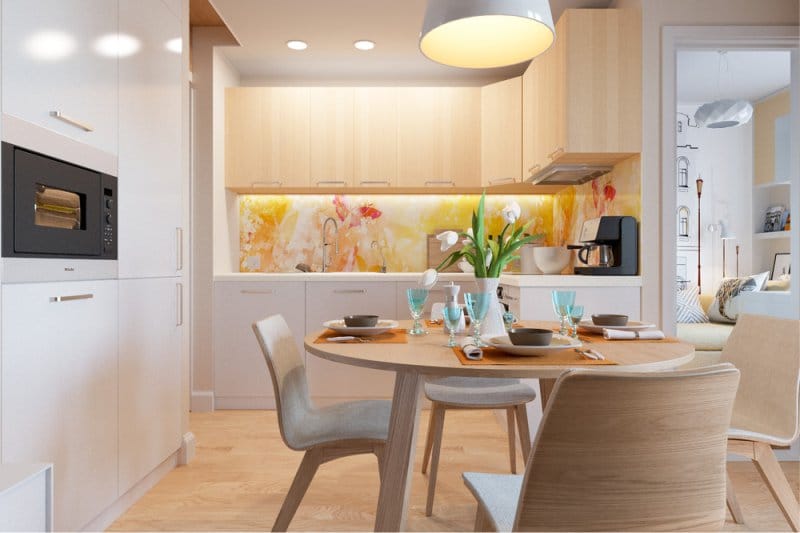
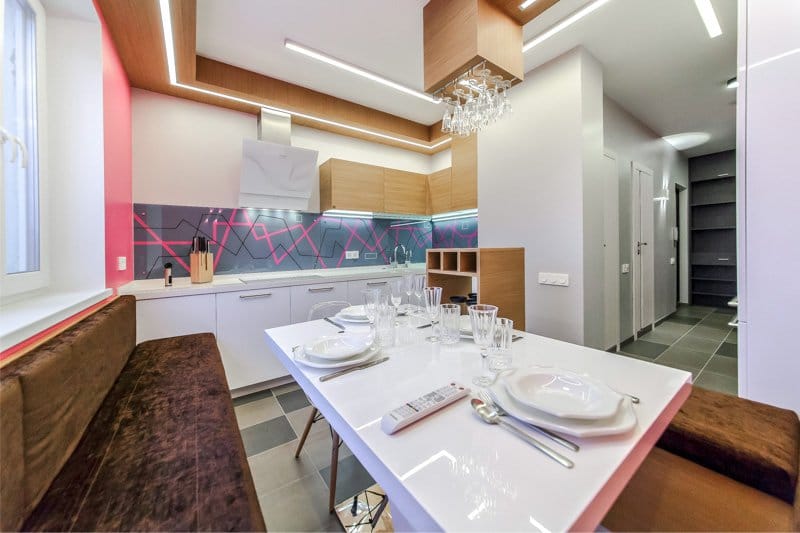
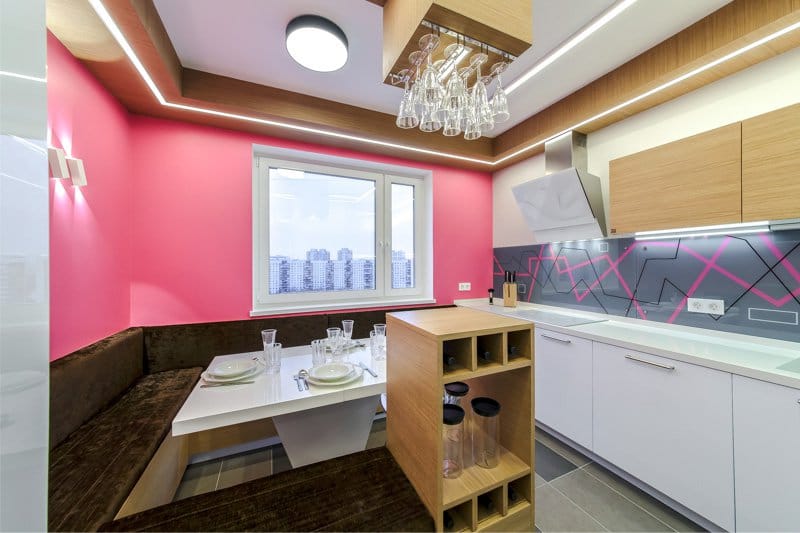
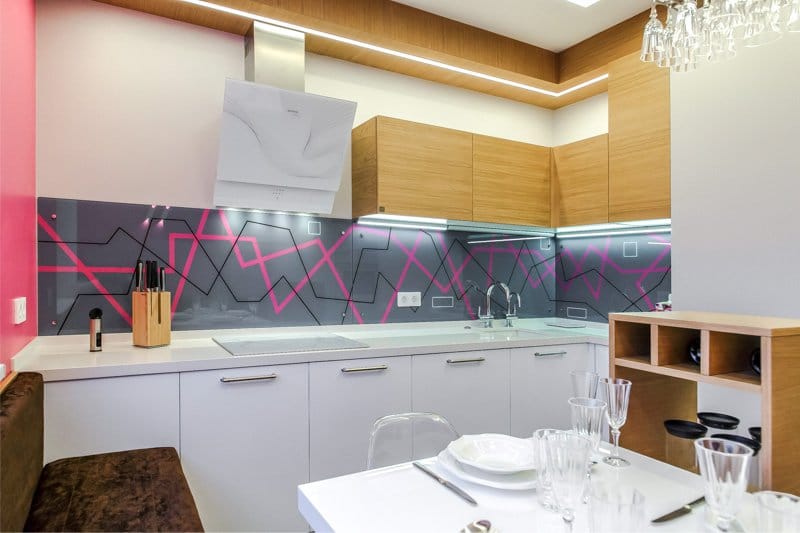
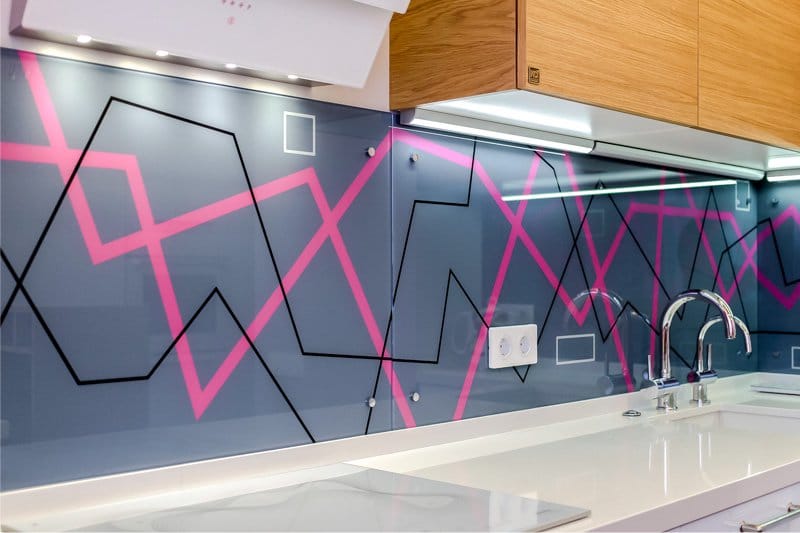
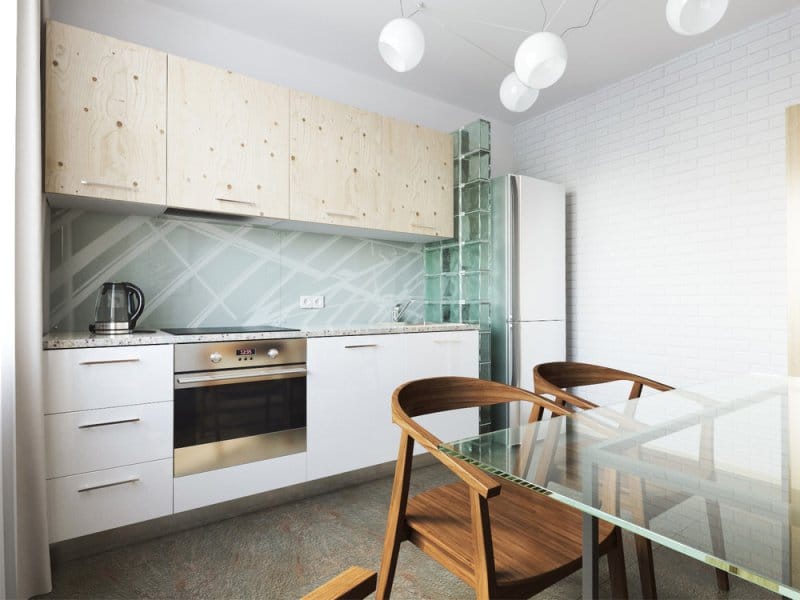
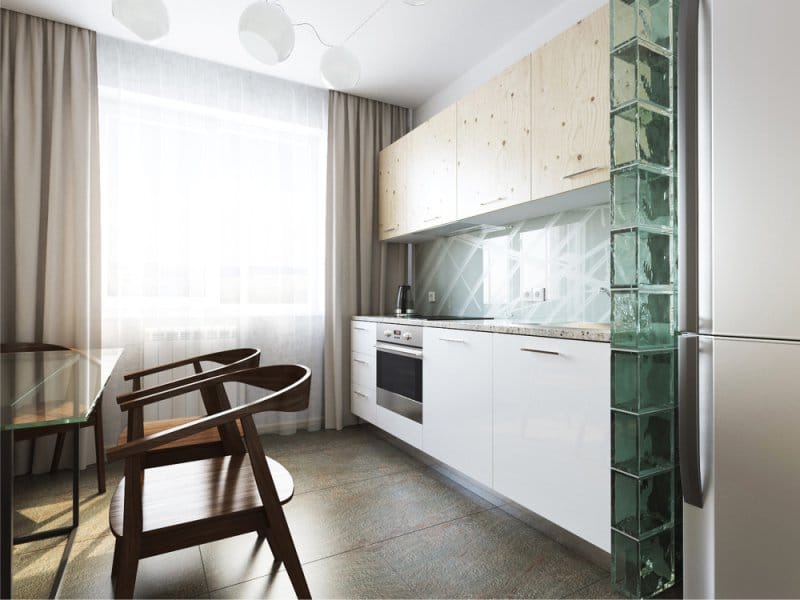
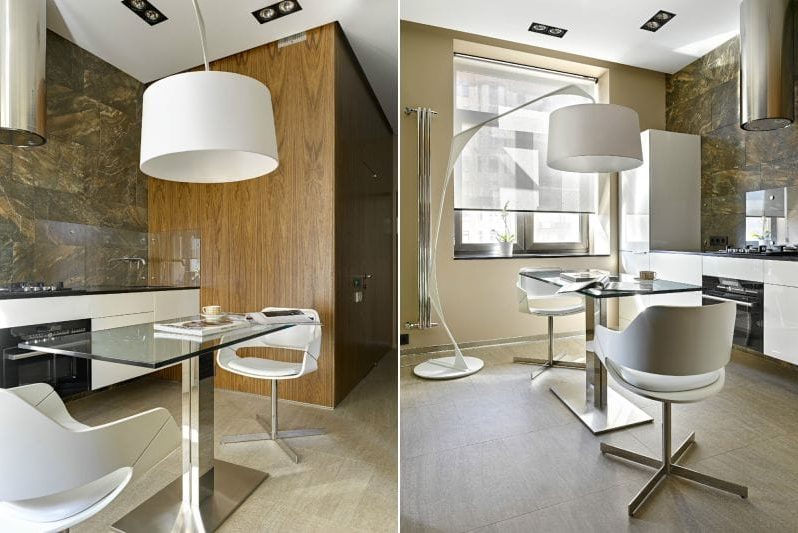
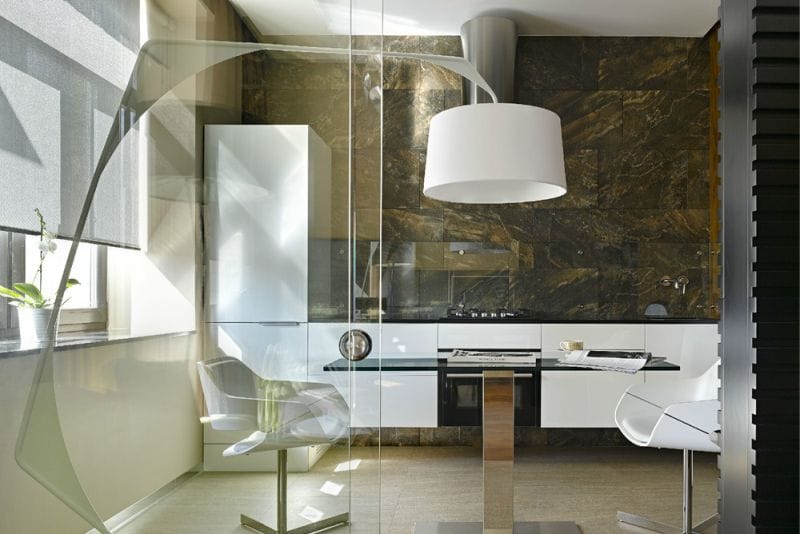
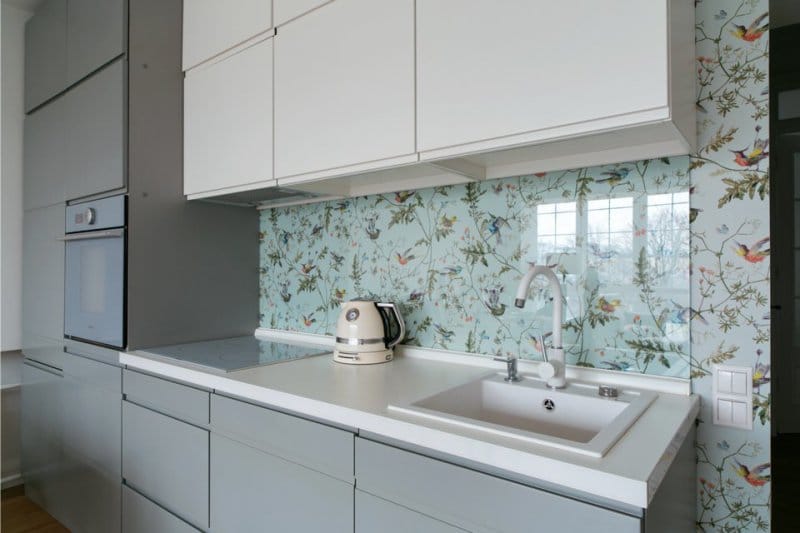
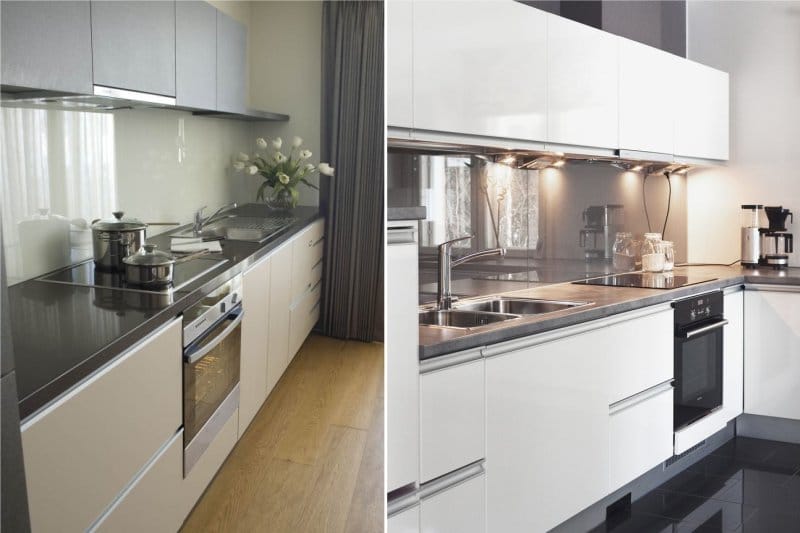
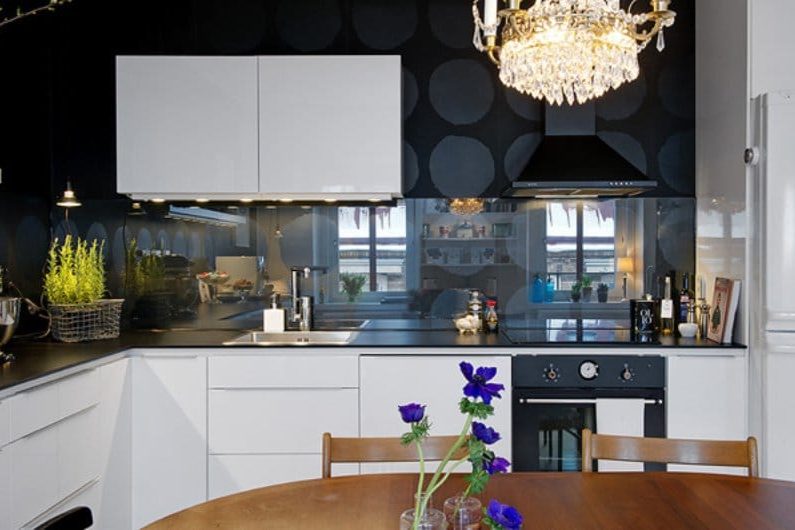
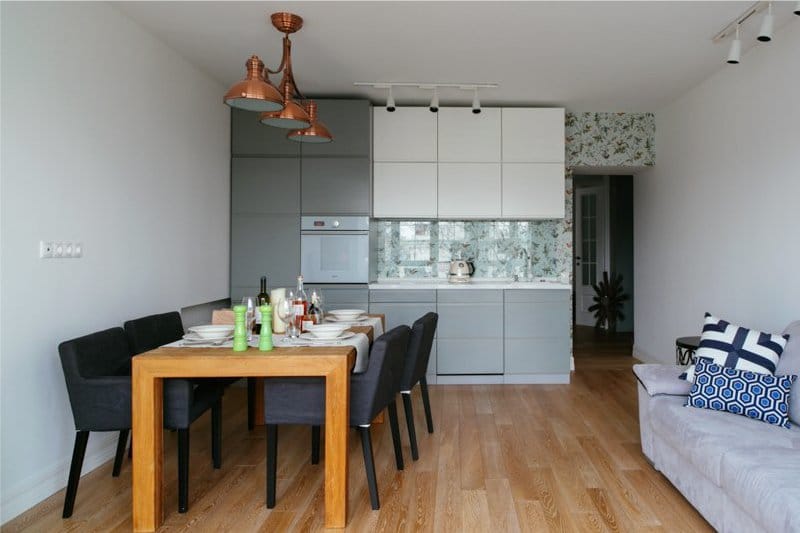
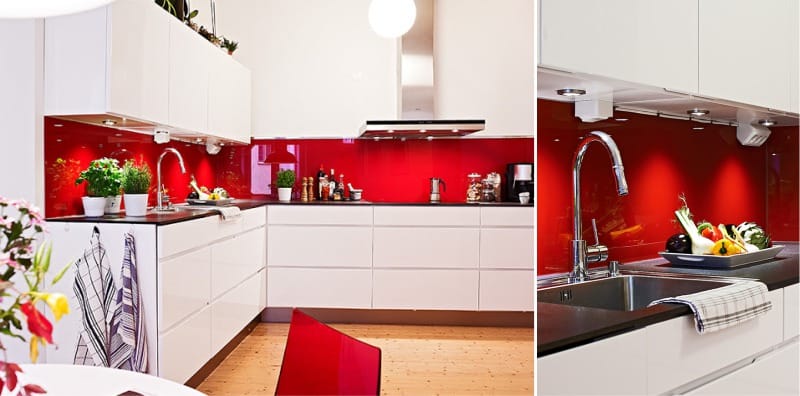
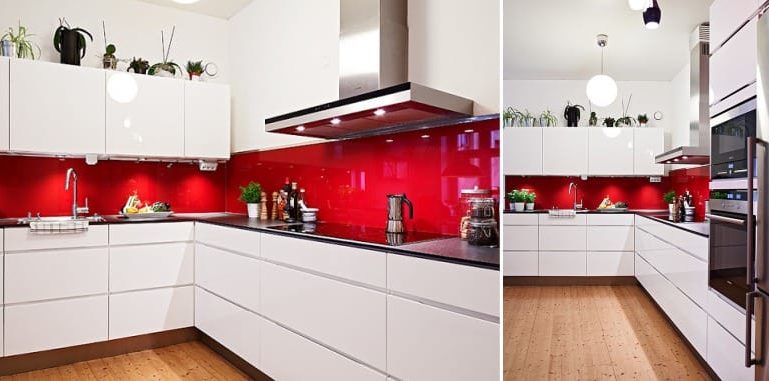
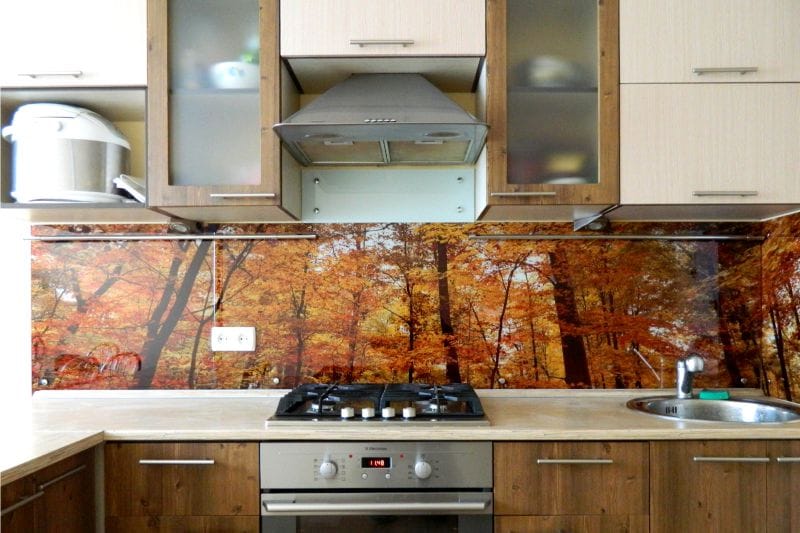
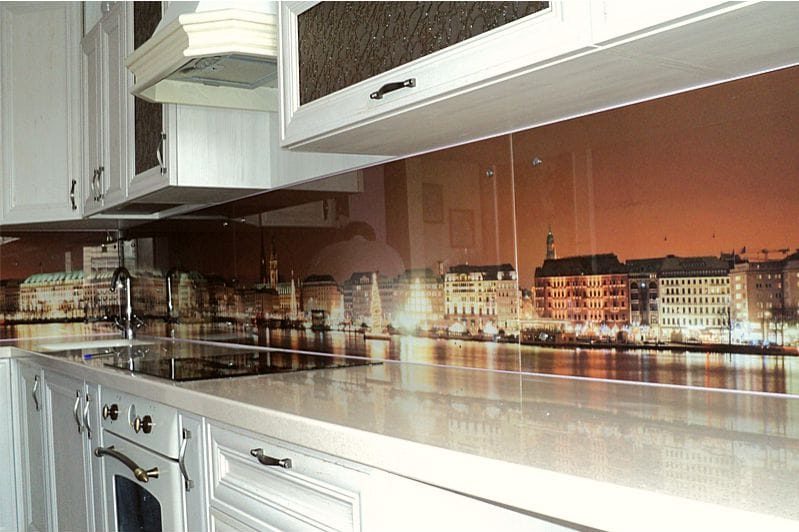
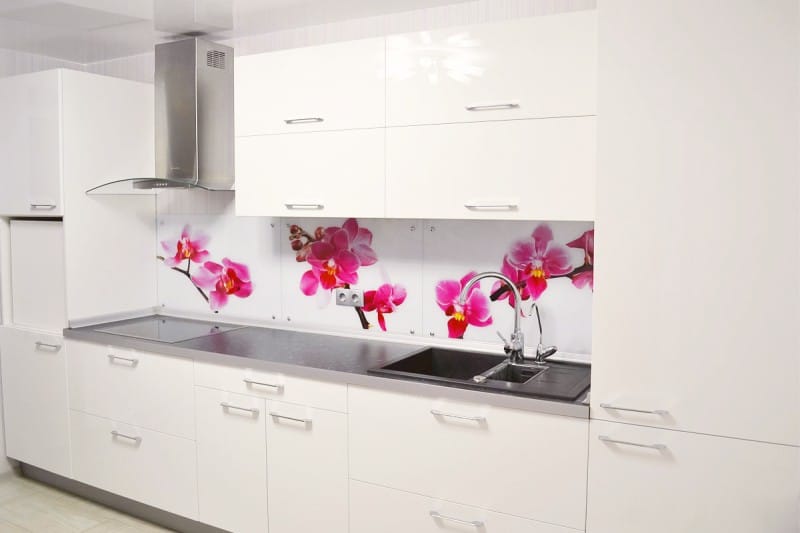
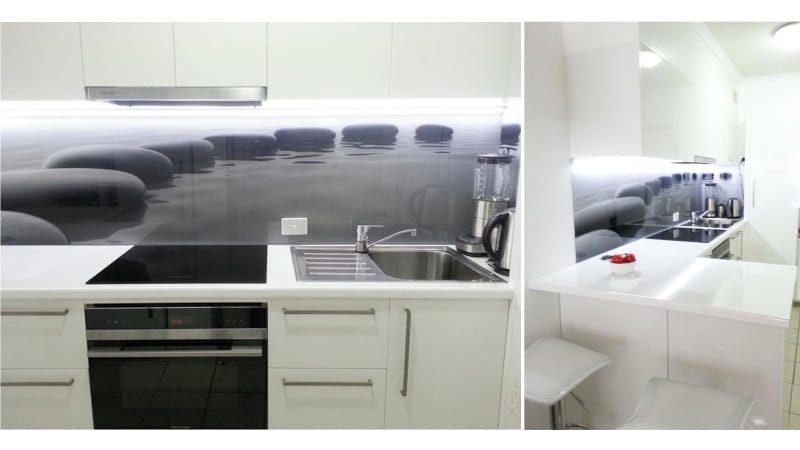
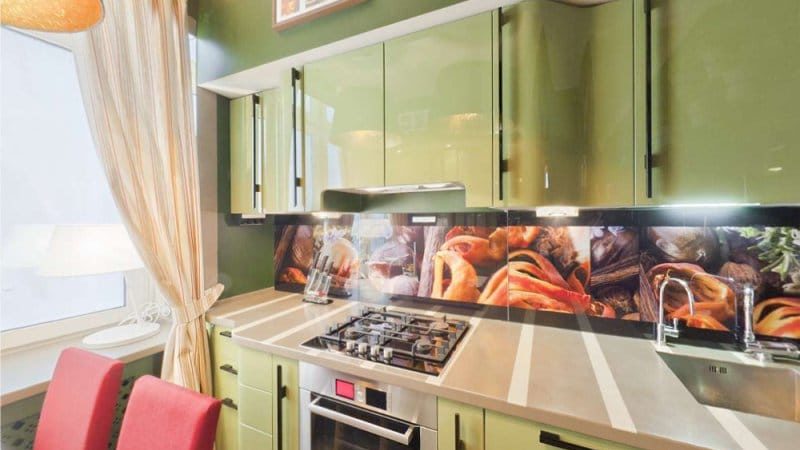
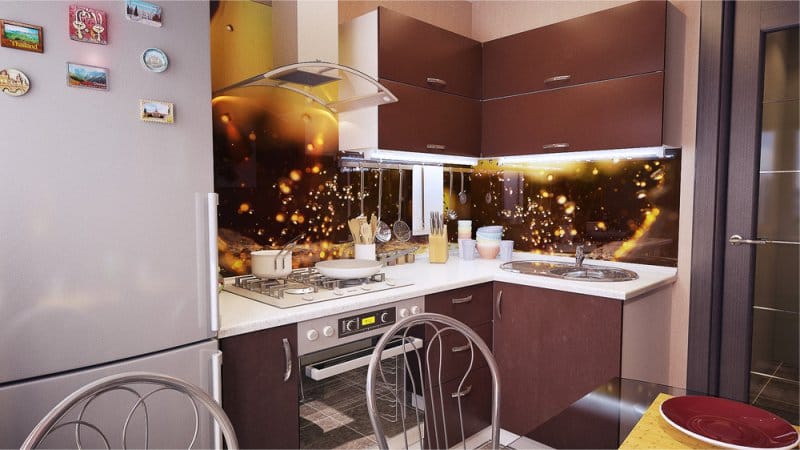
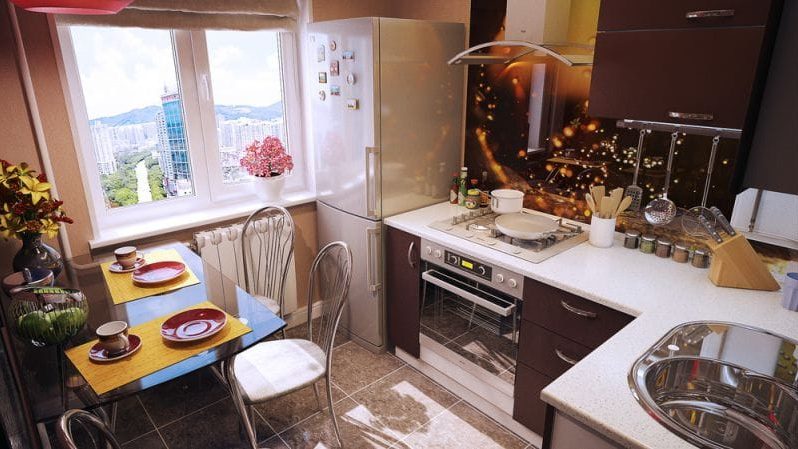
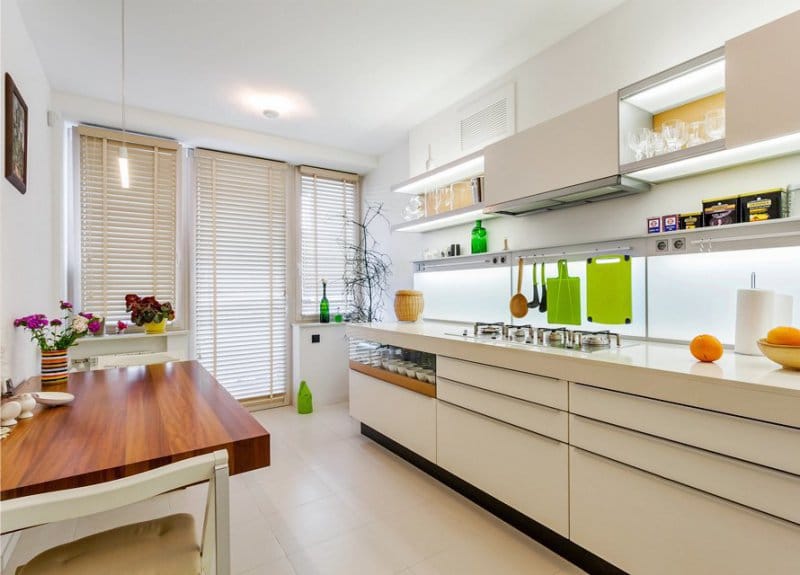
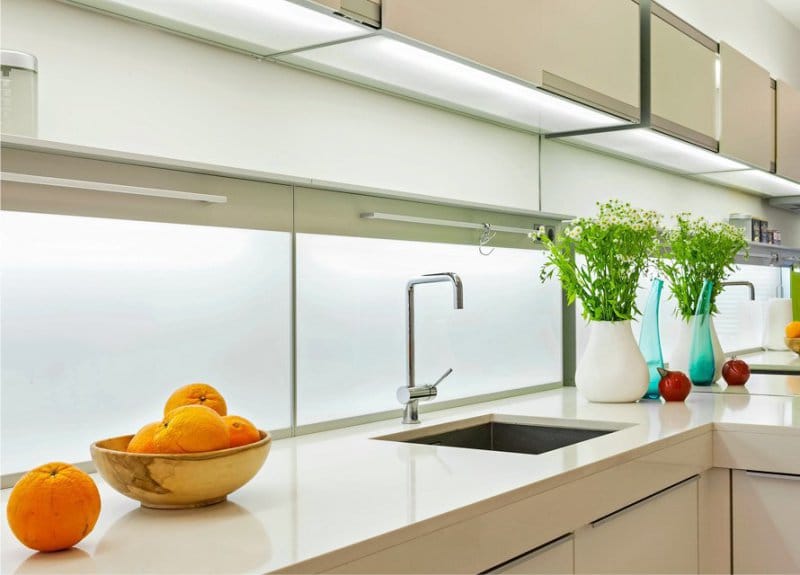
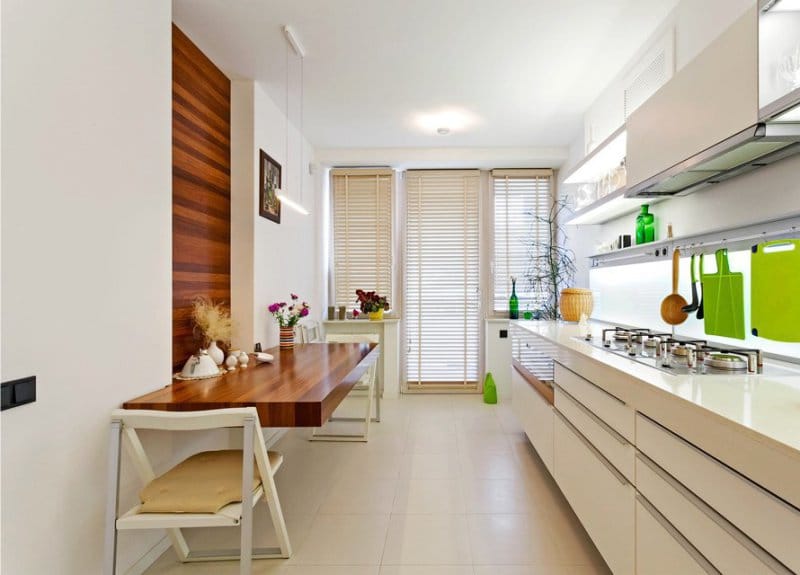
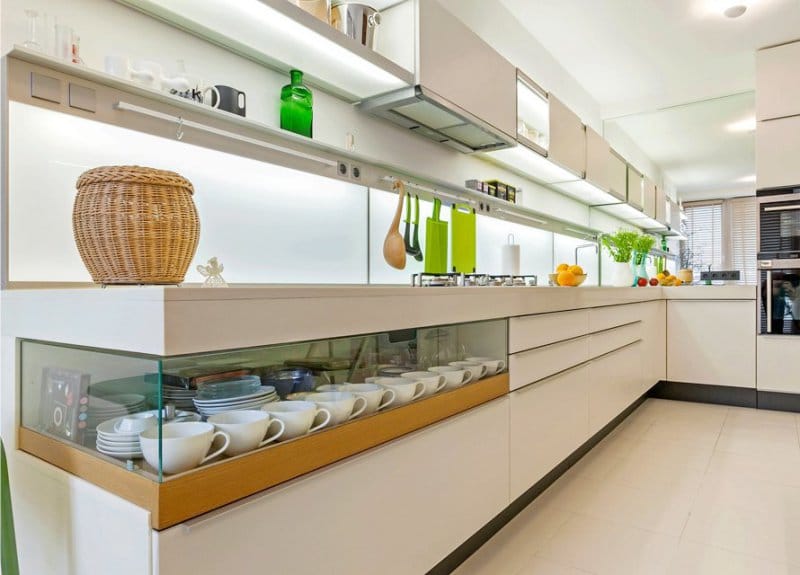
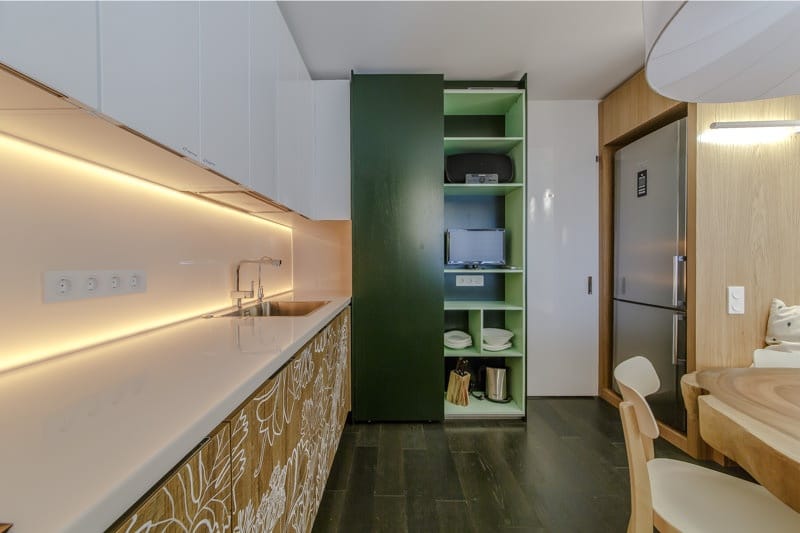
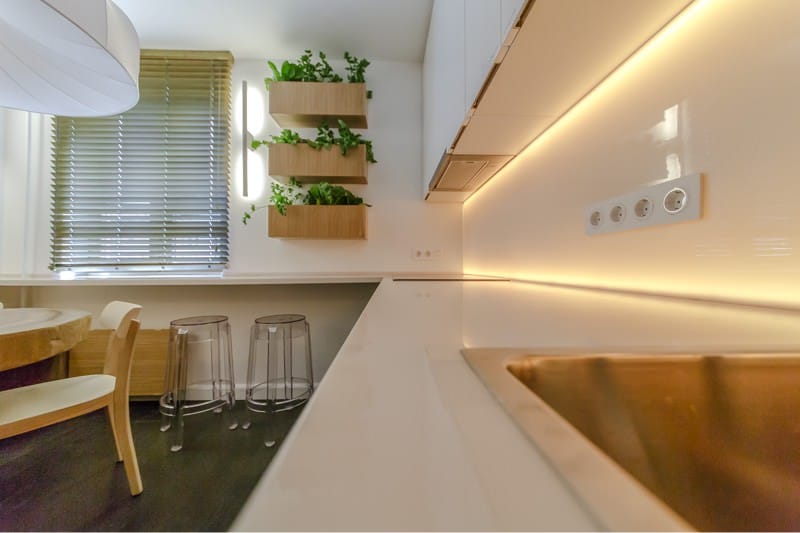
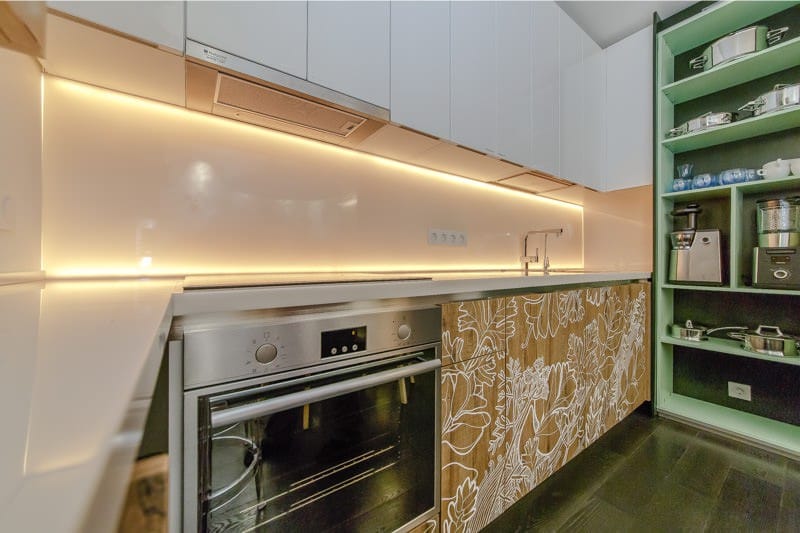
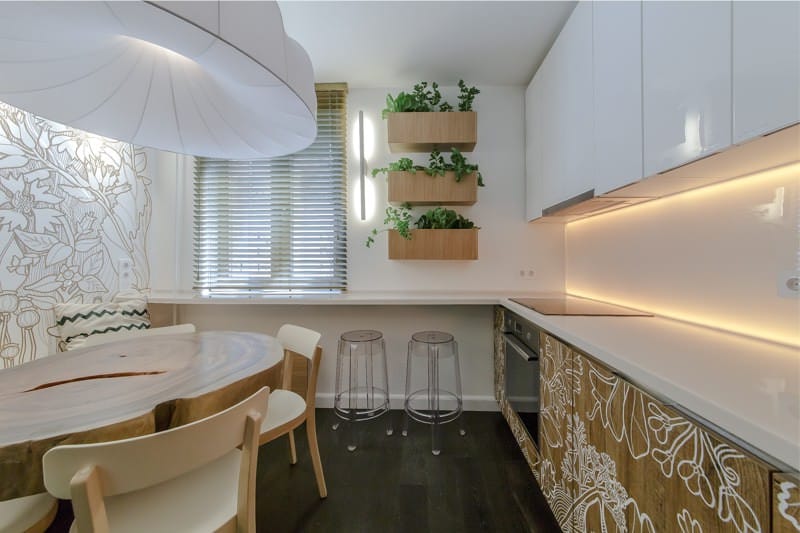
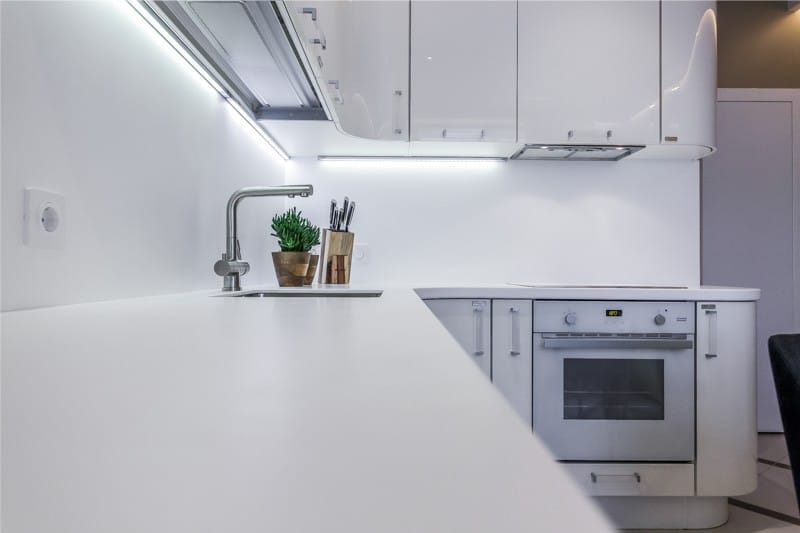
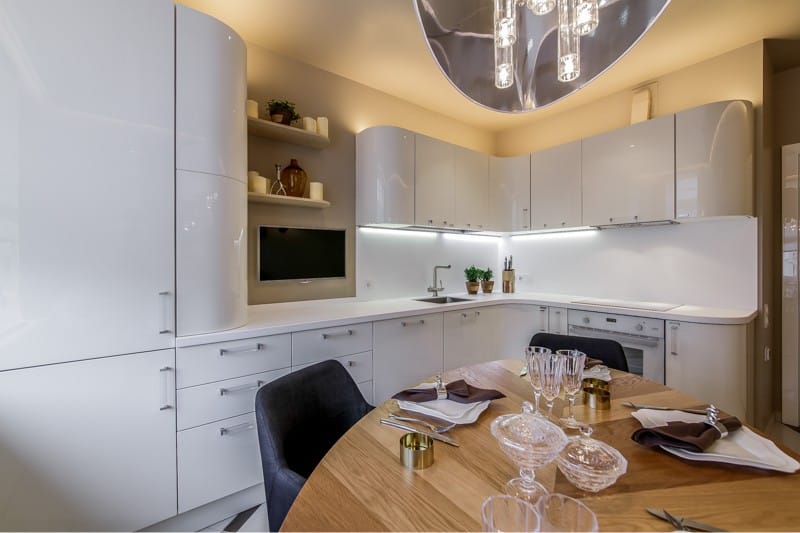

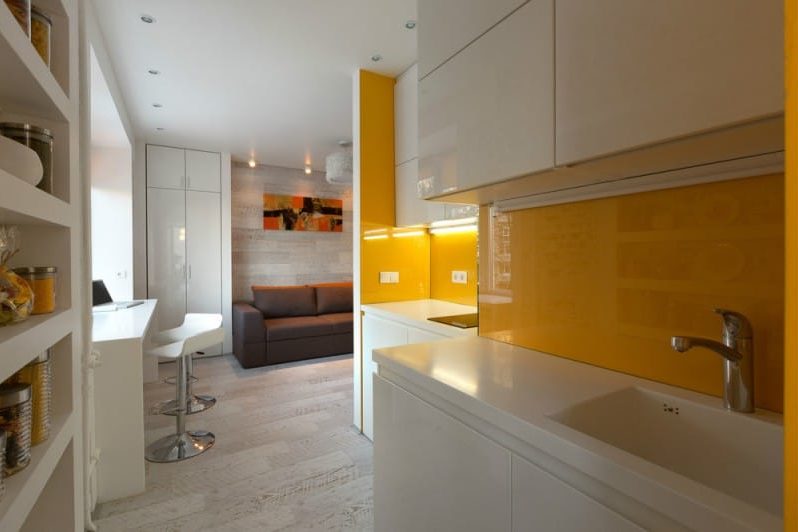
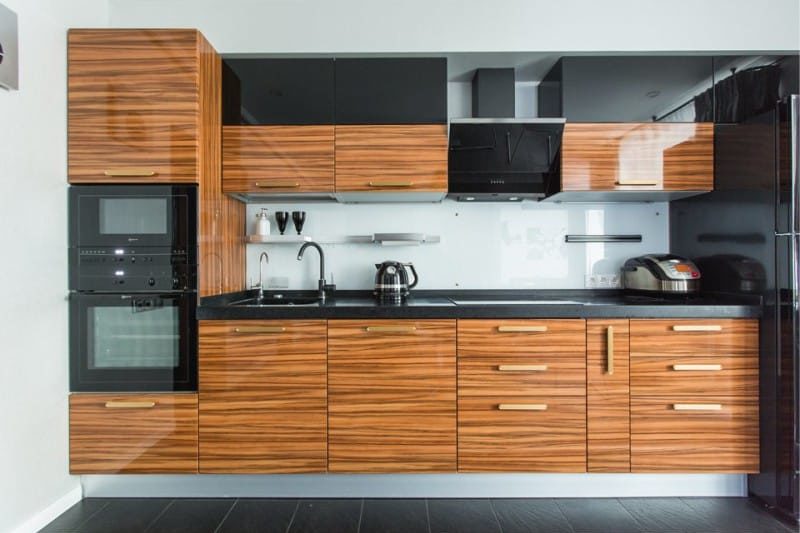
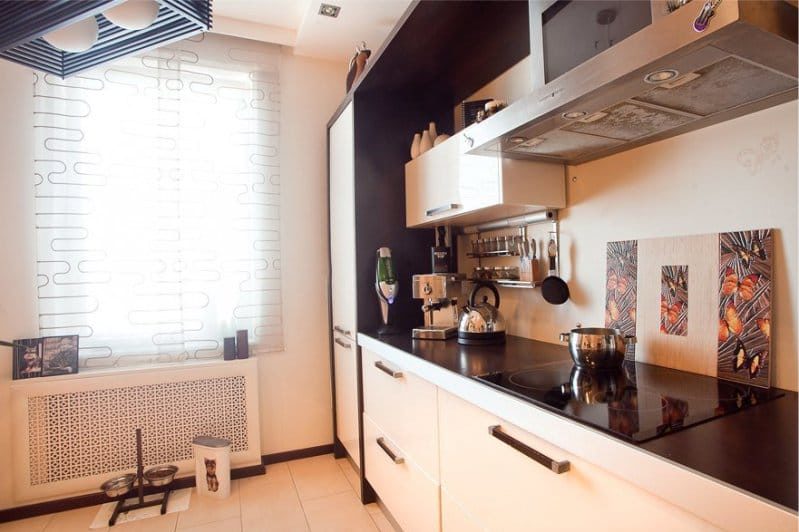
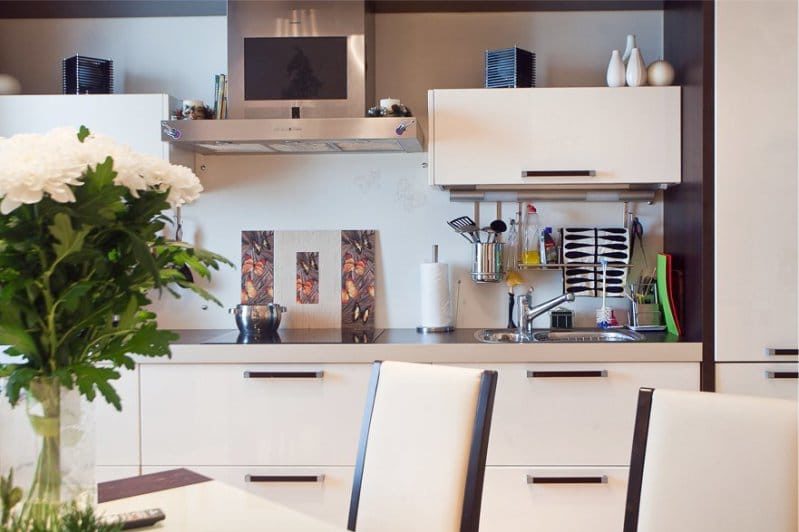
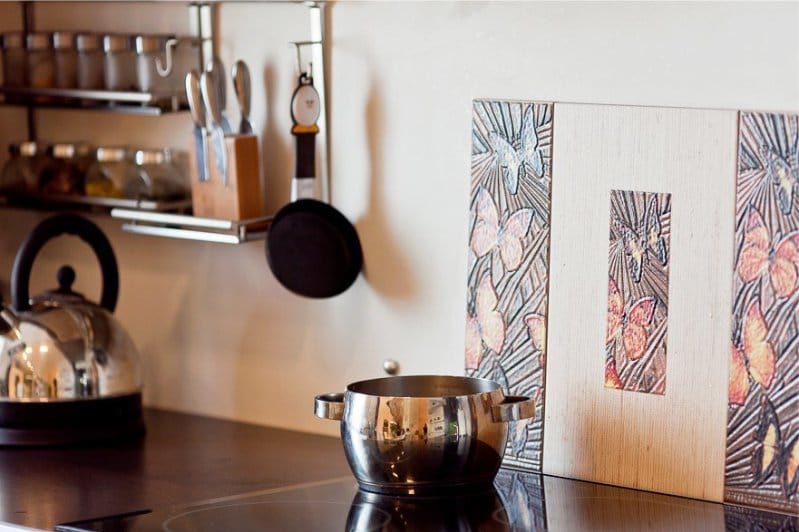
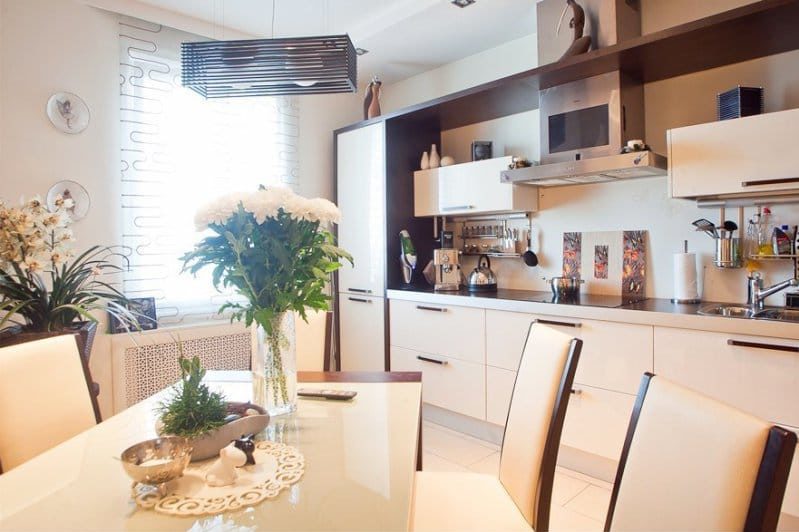
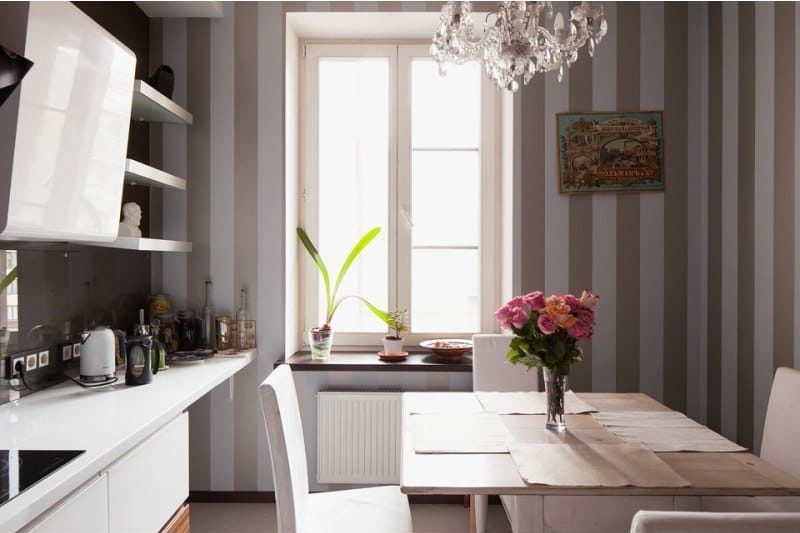
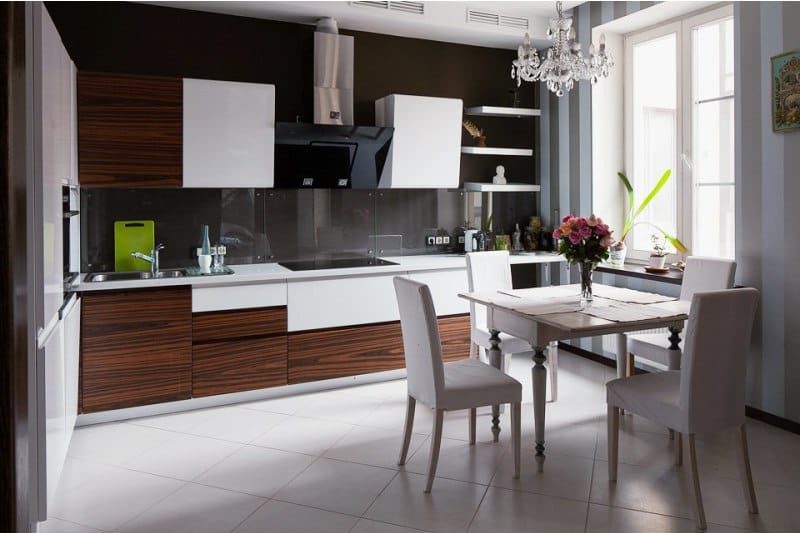
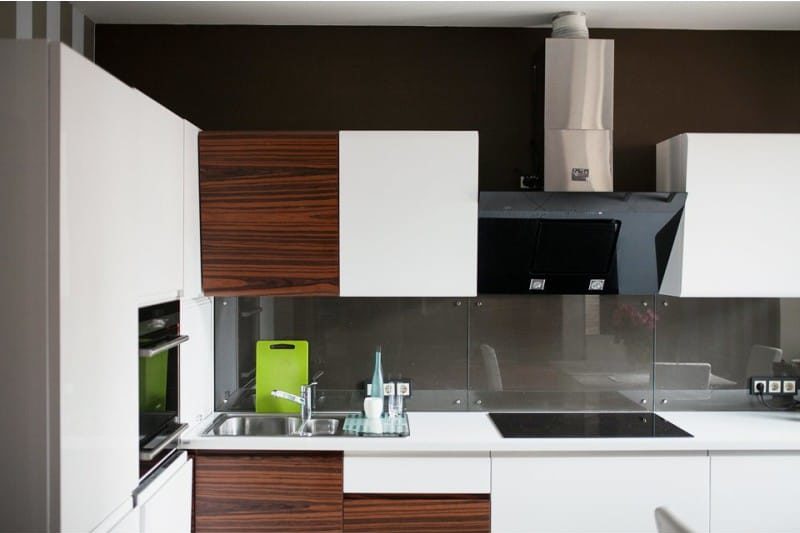
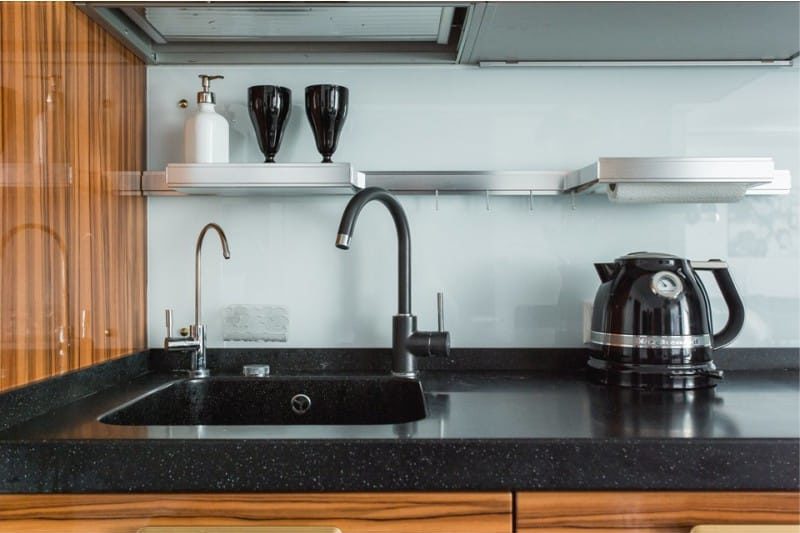
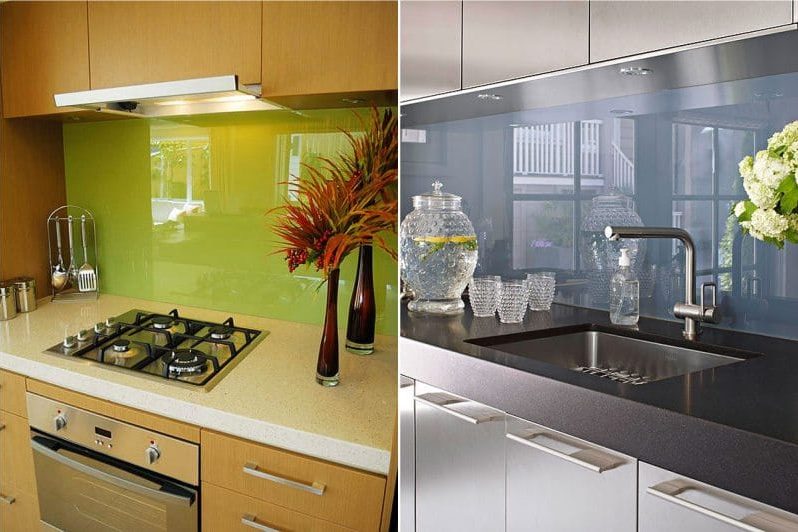
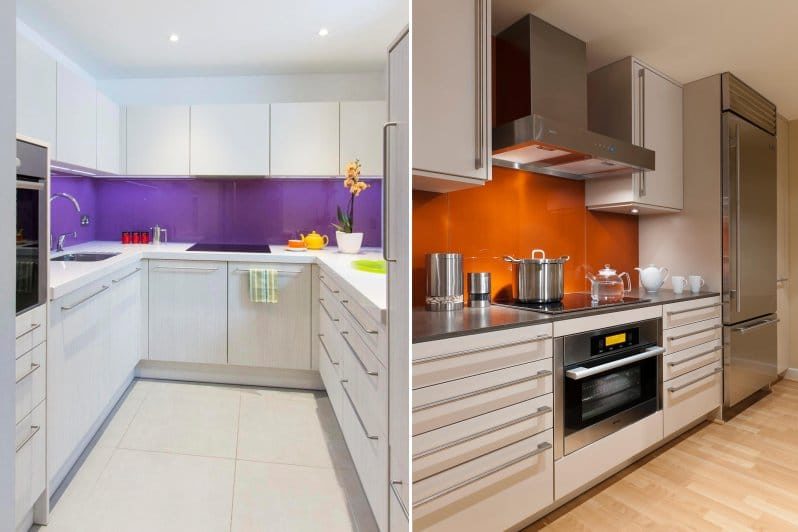
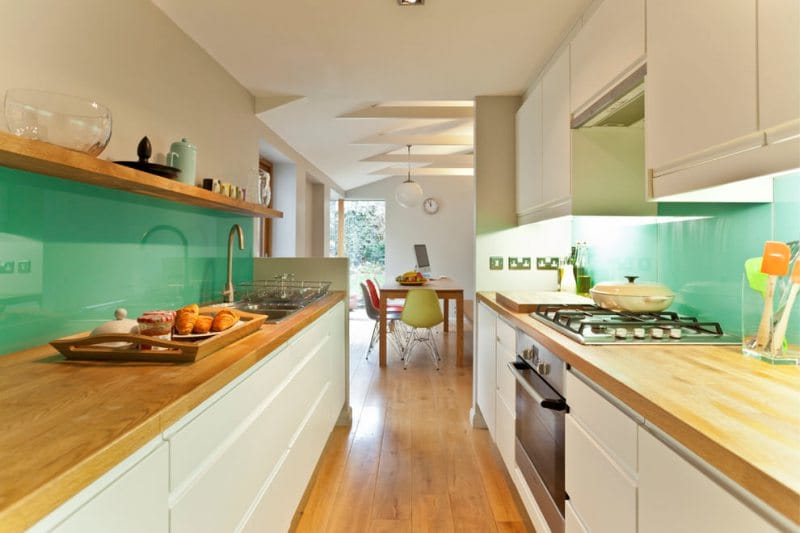
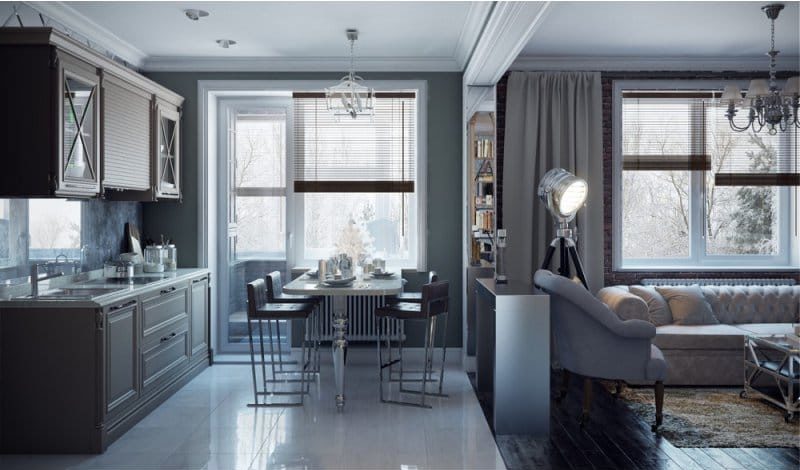
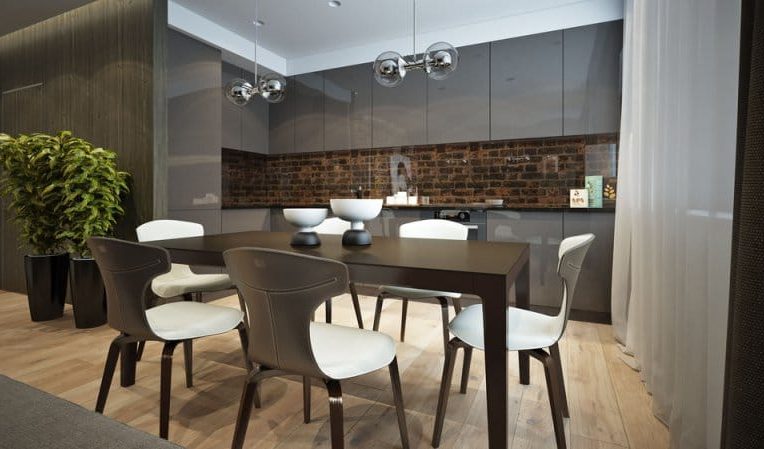
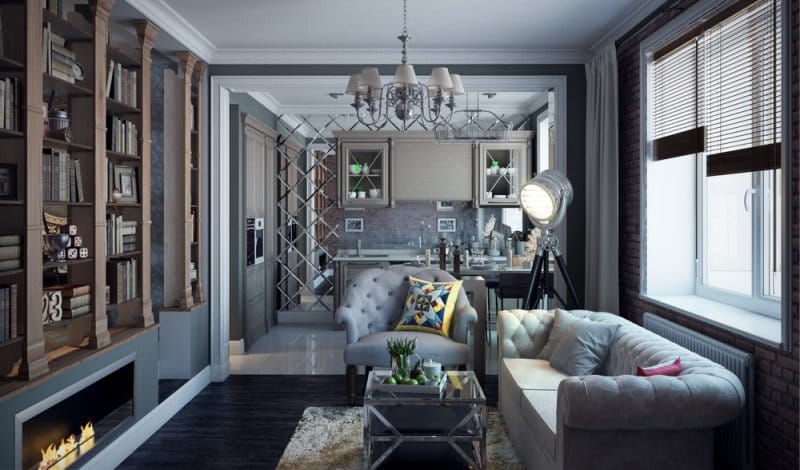
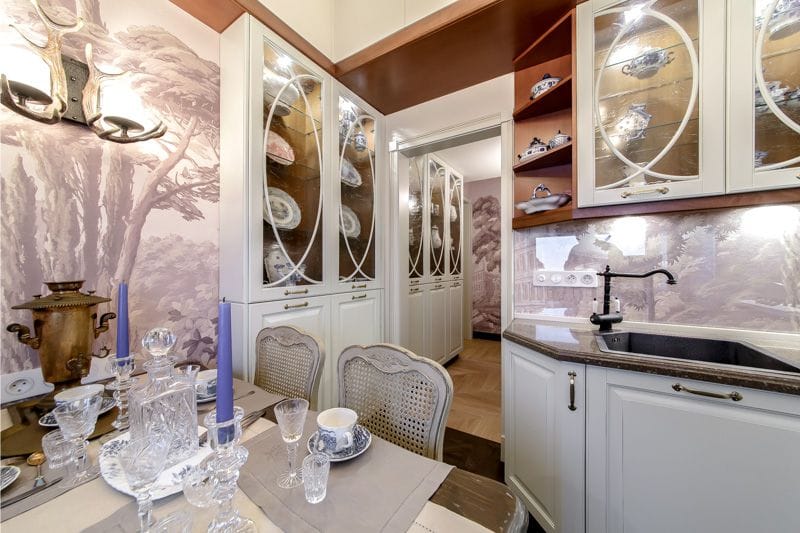


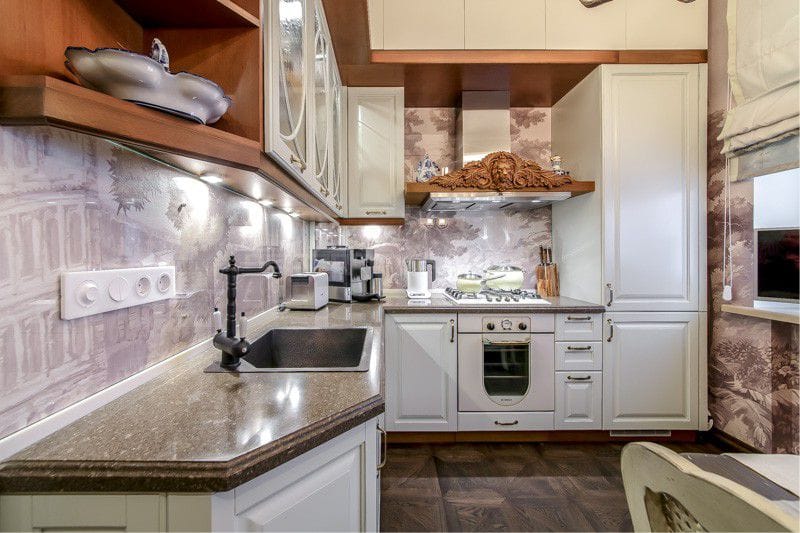

 (Rate the material! Already voted:47 average rating: 4,36 from 5)
(Rate the material! Already voted:47 average rating: 4,36 from 5)